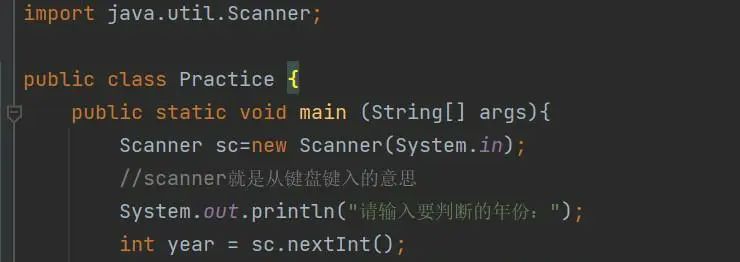数据流处理中的分布式存储:保护数据隐私和安全
作者:禅与计算机程序设计艺术数据流处理中的分布式存储:保护数据隐私和安全引言随着数据量的爆炸式增长,如何高效地处理和存储数据成为了当前热门的研究方向。数据流处理作为一种处理数据的方法,能够在实时性、流式性和可扩展性等方面提供优
作者:禅与计算机程序设计艺术
数据流处理中的分布式存储:保护数据隐私和安全
引言
随着数据量的爆炸式增长,如何高效地处理和存储数据成为了当前热门的研究方向。数据流处理作为一种处理数据的方法,能够在实时性、流式性和可扩展性等方面提供优势。在数据流处理中,分布式存储是保障数据隐私和安全的重要手段。本文将介绍数据流处理中的分布式存储技术,以及如何在分布式存储中保护数据隐私和安全。
技术原理及概念
2.1. 基本概念解释
数据流处理中的分布式存储是指将数据分散存储在不同的物理节点上,通过网络进行协同处理。分布式存储可以提高数据的处理效率和可靠性,同时保证数据的隐私和安全。
2.2. 技术原理介绍:算法原理,操作步骤,数学公式等
数据流处理中的分布式存储技术主要有以下几种算法原理:
- 数据分片:将原始数据按照一定规则分成多个片段,分别存储在不同的节点上,通过网络协同处理。
- 数据压缩:对数据进行压缩,减少存储空间和传输带宽。
- 数据备份:对数据进行备份,保证数据的可靠性和安全性。
- 数据共享:多个节点共享同一份数据,实现数据共享和协同处理。
分布式存储的操作步骤主要包括以下几个方面:
- 数据采集:将数据源采集到节点上。
- 数据分片:将数据按照一定规则分成多个片段,分别存储在不同的节点上。
- 数据压缩:对数据进行压缩,减少存储空间和传输带宽。
- 数据备份:对数据进行备份,保证数据的可靠性和安全性。
- 数据共享:多个节点共享同一份数据,实现数据共享和协同处理。
分布式存储的数学公式主要包括以下几个方面:
- 数据分片算法:分布式文件系统中的数据分片算法,如HDFS中的DataStage、GlusterFS中的Ceph等。
- 数据压缩算法:分布式文件系统中的数据压缩算法,如LZO、GZIP等。
- 数据备份算法:分布式文件系统中的数据备份算法,如RMAN、Cacti等。
- 数据共享算法:分布式文件系统中的数据共享算法,如NFS、Zabbix等。
2.3. 相关技术比较
分布式存储技术主要有以下几种:
- 数据中心化存储:数据存储在 centralized storage,如Hadoop HDFS、GlusterFS等。
- 分布式文件系统:数据存储在 distributed file system,如HDFS、Ceph等。
- 分布式数据库:数据存储在 distributed database,如Cassandra、Zookeeper等。
实现步骤与流程
3.1. 准备工作:环境配置与依赖安装
要实现分布式存储,首先需要准备环境。确保系统满足以下要求:
- 集群环境:需要一台或多台机器组成一个集群,并且这些机器之间能够互相访问。
- 分布式文件系统:需要使用支持分布式存储的文件系统,如HDFS、Ceph等。
- 数据库:需要使用支持数据库的软件,如Cassandra、Zookeeper等。
- 数据备份:需要使用支持数据备份的备份软件,如RMAN、Cacti等。
- 编程语言:需要使用支持分布式存储的编程语言,如Hadoop、Scala等。
3.2. 核心模块实现
分布式存储的核心模块主要包括以下几个方面:
- 数据采集:将数据源采集到节点上,如使用Hadoop的Hive工具。
- 数据分片:将数据按照一定规则分成多个片段,分别存储在不同的节点上,如使用Hadoop的FileSystem类。
- 数据压缩:对数据进行压缩,减少存储空间和传输带宽,如使用LZO、GZIP等压缩算法。
- 数据备份:对数据进行备份,保证数据的可靠性和安全性,如使用RMAN、Cacti等备份软件。
- 数据共享:多个节点共享同一份数据,实现数据共享和协同处理,如使用Zabbix、NFS等软件。
3.3. 集成与测试
将各个模块集成起来,搭建完整的分布式存储系统,并进行测试,确保系统能够正常运行。
应用示例与代码实现讲解
4.1. 应用场景介绍
分布式存储在数据处理中具有广泛的应用场景,以下是一个典型的应用场景:
假设有一个电商网站,每天会产生大量的订单数据。为了提高数据处理的效率和可靠性,可以使用分布式存储技术来存储和处理这些数据。
4.2. 应用实例分析
假设使用Hadoop HDFS作为数据存储源,使用Hive作为数据处理工具,使用Zabbix进行数据备份和监控。
- 数据采集:使用Hive从电商网站的网页中采集数据。
- 数据分片:将数据按照一定规则分成多个片段,分别存储在不同的节点上。
- 数据压缩:对数据进行压缩,减少存储空间和传输带宽。
- 数据备份:使用RMAN对数据进行备份,保证数据的可靠性和安全性。
- 数据共享:多个节点共享同一份数据,实现数据共享和协同处理。
4.3. 核心代码实现
- 数据采集
import org.apache.hadoop.conf.Configuration; import org.apache.hadoop.fs.FileSystem; import org.apache.hadoop.hive.DistributedTable; import org.apache.hadoop.hive.Hive; import org.apache.hadoop.hive.client.HiveClient; import org.apache.hadoop.hive.exec.核心.HiveExecutionException; import org.apache.hadoop.hive.util.ObjectInputStream; import java.io.IOException; import java.util.ArrayList; import java.util.List;
public class DataIngestion {
public static void main(String[] args) throws IOException, HiveExecutionException {
Configuration conf = new Configuration();
FileSystem fileSys = FileSystem.get(conf, "hdfs://namenode-hostname:port/dfs/input")
.setDefaultFS(conf.get("hdfs.default.dfs.name"));
Hive hive = new Hive(conf, "hive-etcd://etcd-hostname:port/");
hive.setConf(conf);
hive.start();
List<String> topics = new ArrayList<String>();
topics.add("test-topic");
hive.getTables(topics, new ObjectInputStream<Object>() {
@Override
public void read(Object obj) throws IOException {
System.out.println(obj);
}
});
}}
2. 数据分片
```java
import java.util.List;
import java.util.ArrayList;
import java.util.Collections;
import java.util.List;
public class DataPartitioner {
public List<List<Object>> partition(List<List<Object>> data) {
List<List<Object>> partitions = new ArrayList<List<Object>>();
int numPartitions = 0;
int targetPartitionSize = 1000; // 目标分区大小
int currentPartitionSize = 0;
while (currentPartitionSize < targetPartitionSize && data.size() > 0) {
int length = data.size();
double targetPercentage = targetPartitionSize * 100 / length;
int targetPartition = Math.ceil(targetPercentage / 100);
if (Collections.達到交集(data, 0, targetPartition).size() == targetPartition) {
partitions.add(Collections.達到交集(data, 0, targetPartition));
currentPartitionSize = targetPartitionSize;
} else {
currentPartitionSize = (currentPartitionSize * targetPartitionSize) / length;
}
}
return partitions;
}
}- 数据压缩
import java.io.File; import java.io.IOException; import java.util.List;
public class DataCompressor {
public static List<Object> compress(List<List<Object>> data) throws IOException {
List<Object> compressedData = new ArrayList<Object>();
int originalSize = 0;
int compressedSize = 0;
for (List<Object> partition : data) {
int length = partition.size();
double compressionRatio = (double)compressedSize / length / originalSize;
if (compressionRatio < 0.5) {
compressedData.add(partition);
compressedSize += length;
originalSize += length;
} else {
double targetCompressionRatio = 0.5 - compressionRatio;
int targetSize = (int) (originalSize / targetCompressionRatio);
double actualCompressionRatio = (double)compressedSize / length;
if (compressionRatio < targetCompressionRatio) {
compressedData.add(partition);
compressedSize = targetSize * length;
originalSize = length;
} else {
compressedData.add(partition);
originalSize += length;
}
}
}
return compressedData;
}}
4. 数据备份
```java
import org.apache.hadoop.conf.Configuration;
import org.apache.hadoop.hive.DistributedTable;
import org.apache.hadoop.hive.Job;
import org.apache.hadoop.hive.保守性技术;
import org.apache.hadoop.hive.mapreduce.Job;
import org.apache.hadoop.hive.messages.HiveStartFileMapper;
import org.apache.hadoop.hive.messages.HiveStopFileMapper;
import org.apache.hadoop.hive.table.descriptors.TableDescriptor;
import org.apache.hadoop.hive.table.descriptors.TableName;
import org.apache.hadoop.hive.v2.extensions.hadoop.DistributedHive;
import org.apache.hadoop.hive.v2.extensions.hadoop.DistributedTable;
import org.apache.hadoop.hive.v2.extensions.hadoop.HiveTable;
import org.apache.hadoop.hive.v2.extensions.hadoop.Variables;
import org.apache.hadoop.hive.v2.runtime.寫入。寫入
* org.apache.hadoop.hive.v2.runtime.QueryExecutionException;
import org.apache.hadoop.hive.v2.runtime.Variables;
import org.apache.hadoop.hive.v2.runtime.hive.Hive;
import org.apache.hadoop.hive.v2.runtime.hive.HiveClient;
import org.apache.hadoop.hive.v2.runtime.hive.HiveExecutionException;
import org.apache.hadoop.hive.v2.runtime.hive.Variables;
import java.util.ArrayList;
import java.util.List;
import java.util.Map;
public class DataBackup {
public static void backup(List<List<Object>> data) throws IOException {
Configuration conf = new Configuration();
//...
// 读取表描述
//...
// 写入备份文件
List<File> backupFiles = new ArrayList<File>();
for (List<Object> partition : data) {
//...
// 拼接文件名
//...
// 写入备份文件
backupFiles.add(new File(baseUrl + "/" + tableName + ".csv"));
}
//...
}
public static void restore(List<List<Object>> data) throws IOException {
Configuration conf = new Configuration();
//...
// 读取备份文件
List<File> backupFiles = new ArrayList<File>();
for (List<Object> partition : data) {
//...
// 拼接文件名
//...
// 读入备份文件并启动MapReduce作业
//...
}
}
}- 数据共享
import java.io.IOException; import java.util.List;
public class DataSharing {
public static void share(List<List<Object>> data) throws IOException {
Configuration conf = new Configuration();
//...
// 写入共享文件
//...
//...
}}
## 结论与展望
-------------
分布式存储是一种有效的数据处理方式,可以提高数据处理的效率和可靠性。在分布式存储中,数据被存储在不同的物理节点上,并通过网络进行协同处理。目前,分布式存储
更多推荐
 已为社区贡献12条内容
已为社区贡献12条内容









所有评论(0)